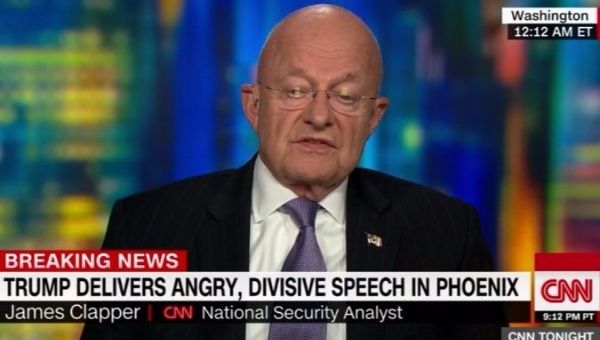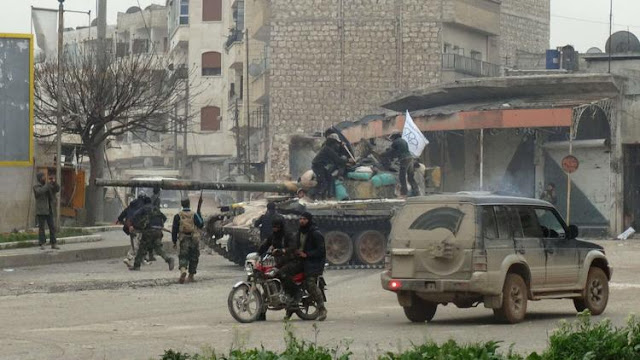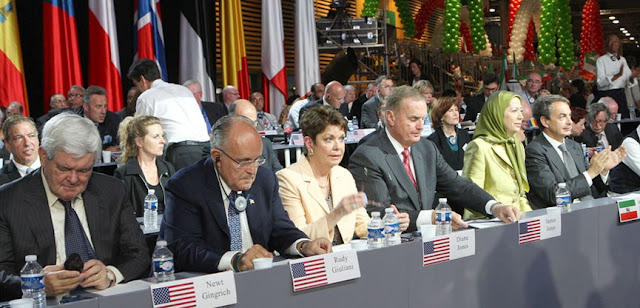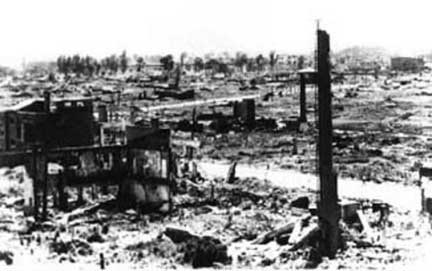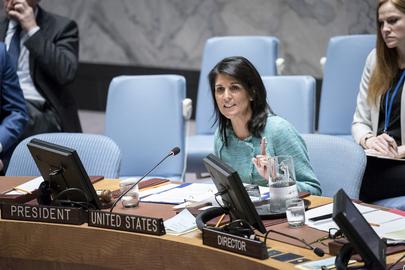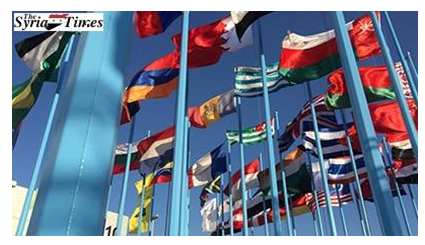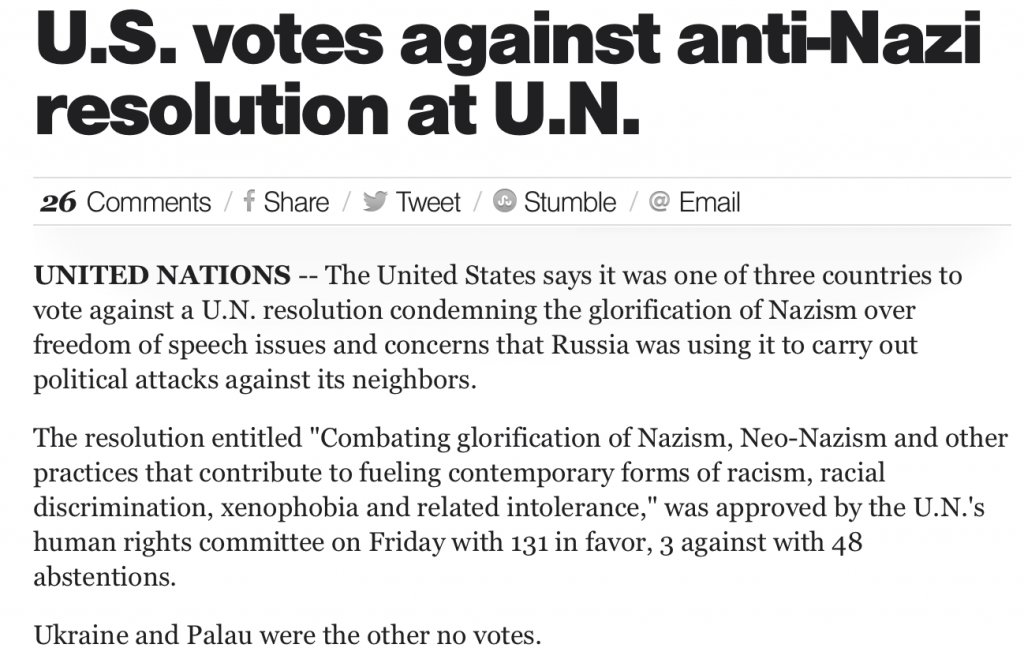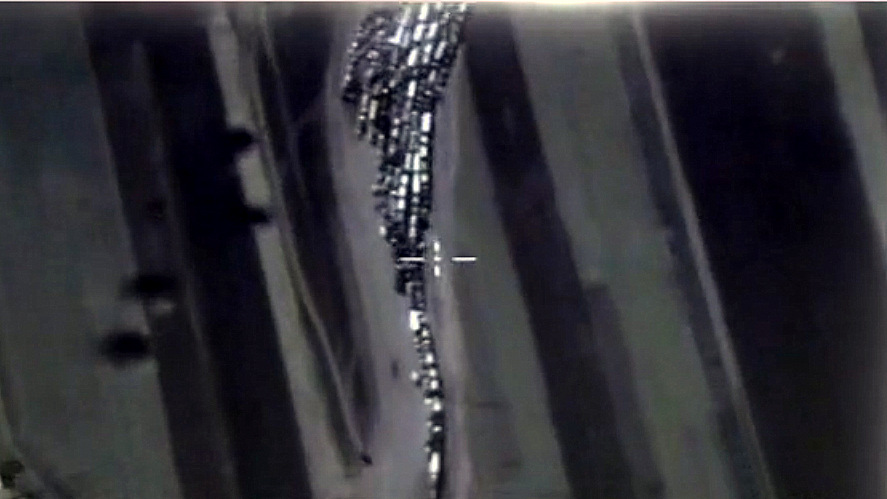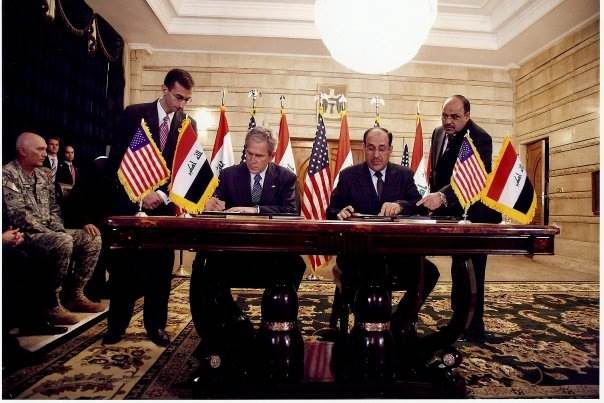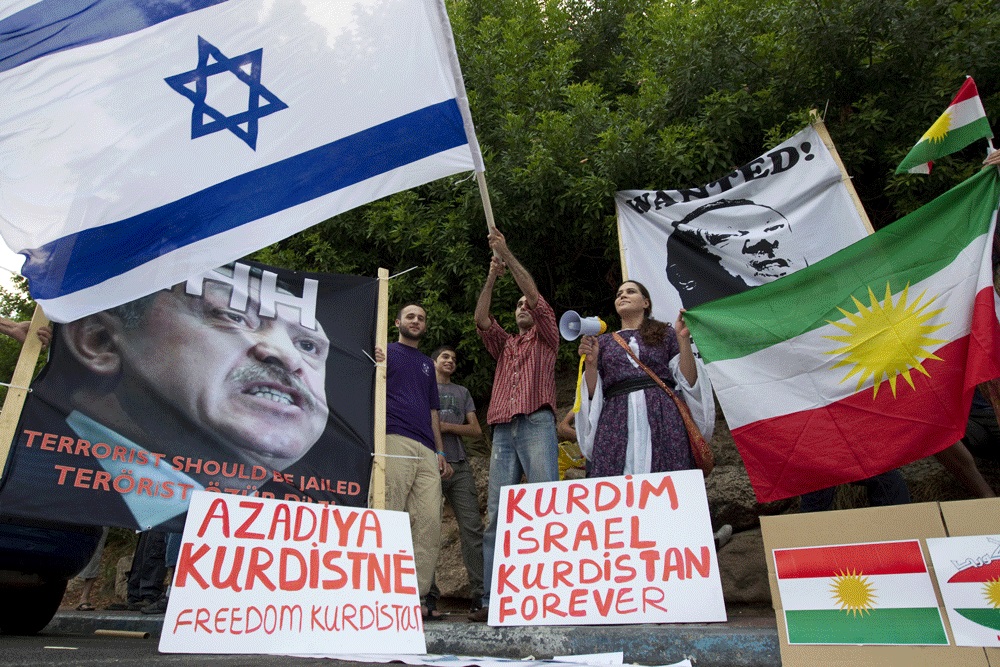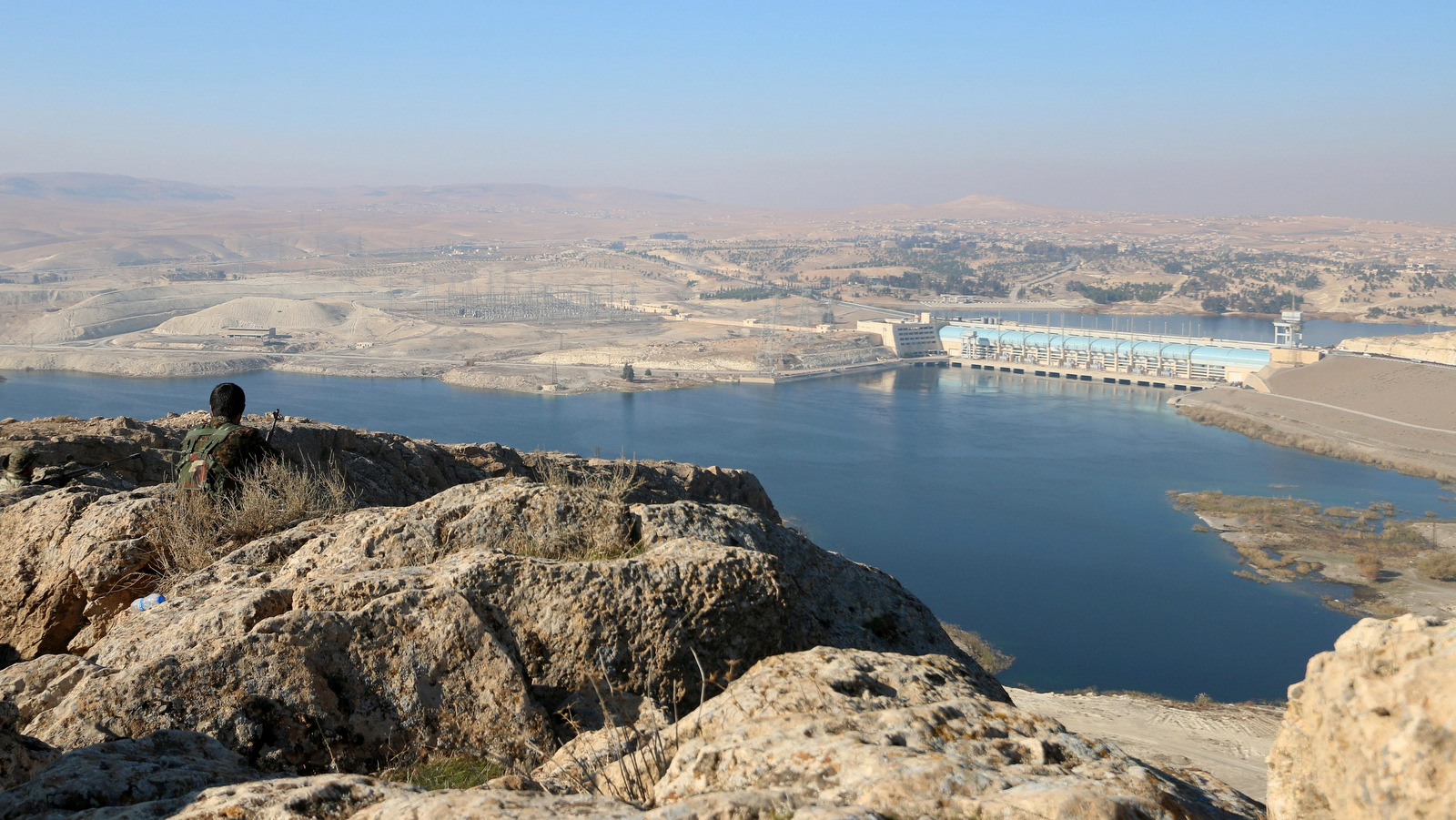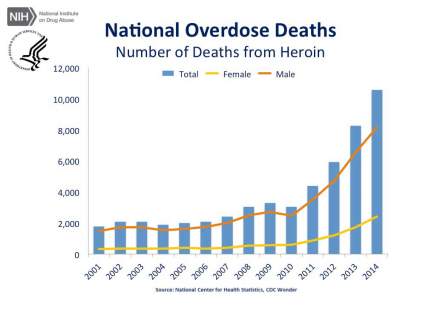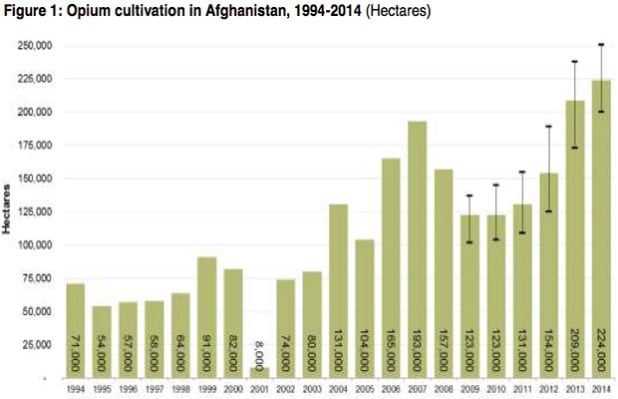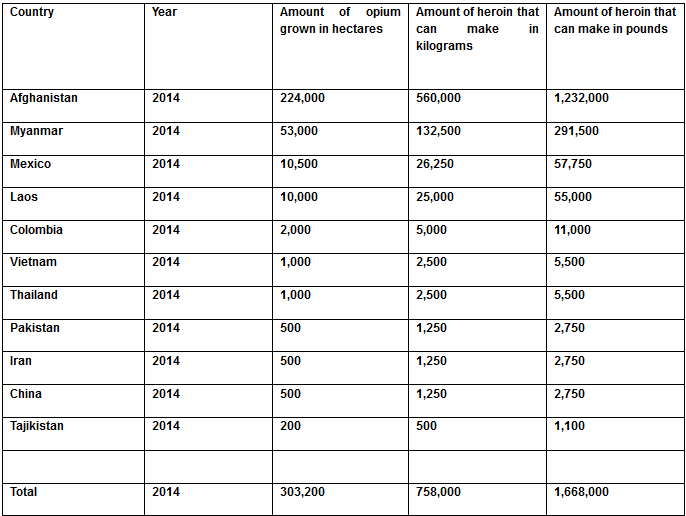Despite the public battles between the New York Times and President Donald Trump, the two seem to be on a similar page about the unfolding crisis in Venezuela. Last week, the administration announced it had “designated” President Nicolas Maduro and other Venezuelan officials, freezing their U.S. assets and barring Americans from doing business with them. The Times called that the best way to confront the Venezuelan government. The Times, though, went a step further calling on European and other nations to join what it called a “quarantine” of Maduro. It was an interesting word choice. That was also the term used for the early days of the U.S. economic blockade against Cuba. Interestingly, none of these players — Trump or the New York Times — are calling for a boycott on Venezuelan oil, which is heavily consumed by Americans.
U.S. hostile posturing toward Venezuela is nothing new. Washington, under both Democrats and Republicans, loathed the late President Hugo Chavez and his Bolivarian revolution. Chavez enjoyed sticking it to Washington and viewed each attack against him as a badge of honor in his struggle against Yankee imperialism. But Chavez’s successor, Maduro, does not have nearly the charisma or credibility among Venezuelans and progressive forces in Latin America enjoyed by Chavez. And Maduro’s recent actions have been disturbing even to some of Chavez’s close allies.
On July 30, the Venezuelan government held an election for a constituent assembly to re-draft the country’s constitution. The vote was held after an order issued by Maduro. Why that was necessary was baffling even to former supporters of Chavez, as the Bolivarian movement has often celebrated its constitution as a revolutionary and meticulous document. For many seasoned observers, the whole affair reeked of an effort to consolidate power. The vote for the assembly was boycotted by many Venezuelans and when the official results were announced, it was clear that the tally had been tampered with. It seems likely the government would have won the vote anyway, making the tampering all the more suspect.
Maduro’s forces have also conducted raids to arrest opposition figures and both government forces and opposition forces have been involved in lethal actions during protests. It must be pointed out that Maduro controls the country’s military and intelligence forces and those far outgun all of the combined masses of government opponents. That the United States funds and supports some of the worst elements of the opposition in Venezuela is a fact. There is a long history of Washington meddling in the affairs of Venezuela.
But that is not the entire story. Many ordinary Venezuelans, including progressives and leftists, are fed up with the government and receive no support or funding from shady U.S. entities. Venezuela presents a real challenge for progressive forces in the country and in Latin America more generally. Chavez was extremely popular, as was his movement. Pro-U.S. factions taking power in Venezuela is a real possibility in the event of Maduro’s downfall.
To discuss this complex unfolding situation, I interviewed attorney Eva Gollinger this week on Intercepted. She was one of Hugo Chavez’s most prominent supporters, was very close to the late president and knows many of the players in Venezuela personally, including Maduro. She is the author of several books, including The Chavez Code which is based on documents she obtained detailing U.S. interference in Venezuela, including the brief coup against Chavez in 2002. What follows is an expanded transcript of that interview, an excerpt of which was broadcast on Intercepted.
Extended transcript
Jeremy Scahill: Eva Golinger, welcome to Intercepted.
Eva Golinger: Thanks for having me, Jeremy.
JS: Now there’s a lot I want to get into with you. I want to talk about some of the critique of Maduro coming from the left, not just in Venezuela, but elsewhere in the world. But I want to begin by asking your response to what increasingly feels like a kind of war-posturing from the Trump Administration. Statements came from his national security adviser, H.R. McMaster, they’ve now designated Maduro. The New York Times is saying that he belongs in a camp intellectually or personally of people like Kim Jong-un and Bashar al-Assad. Your response to what’s coming out of this administration and from the New York Times about the situation in Venezuela.
EG: There’s been an ongoing escalation coming out of the United States government against the Venezuelan government, since Hugo Chavez was in power. And we’ve seen an increase over the years as the Venezuelan government has sort of dug in deeper with their ideological model, leaning more towards this anti-imperialist alliance internationally, the more they’ve opened themselves up to countries like Russia and China and Iran as their trade partners. And then overall, I mean, taking a position that is adversarial to the U.S.
So it’s nothing new, it’s just that it’s — it’s more direct now. I think that a lot of the interaction before in the posturing of the United States was done more in a lower profile way.
I mean, it was President Obama who declared Venezuela an unusual and extraordinary threat to the United States and put the first sort of sanctions on Venezuela officially. And that was just a couple years ago. And those were renewed this year before Trump really had a full understanding of what was taking place. So it’s really just been an ongoing escalation.
From the time Chavez first was elected in ’98 and those initial years when he didn’t comply with what the U.S. was looking for and always had in Venezuela as a client state that’s when the U.S. backed a coup against Chavez in 2002. And subsequently that sort of aggression just began increasing over the years.
So, I mean, now we’re just seeing sort of the culmination of it and the fact that they’re buckling down more. But, in the end, the relationship between the two countries remains generally the same. Venezuela is one of the principal suppliers of oil to the U.S. I mean, it’s a commercial relationship. They are interdependent. And in the end, there’s a lot of rhetoric back and forth. And, yes, there’s definitely an escalation of it now under Trump because the people sort of — that are pushing this this particular escalation, right now, that have Trump’s ear — are the more reactionary sectors of the Republican Party. Marco Rubio for example.
I mean, that’s what they’ve been looking for. They’ve been looking for a way to push regime change in Venezuela. But it really has nothing to do with a change in policy. It’s been a sort of a state policy of the United States towards Venezuela since the Chavez government.
JS: What did you make of Jeremy Corbyn’s statement this week, where he said he condemns violence on all sides?
EG: Well I mean that’s a giant piece of the narrative that’s been missing on what’s been taking place in Venezuela. You see a lot, I mean particularly here in the U.S. — in the New York Times, in The Washington Post, in the Wall Street Journal, other media CNN, NBC — you hear a lot about these opposition protests being repressed by the government but you’re not getting a full picture.
Because while there is a state reaction taking place, there is repression with tear gas and rubber bullets, you’re not seeing the other side of it, which is that those are not exactly peaceful democratic protests. There are smaller factions. I mean, there are parts of the opposition in Venezuela that act within a democratic framework, but there is a very violent faction that’s gotten out of control. It’s anarchical. I mean, they where they’re using Molotov cocktails, homemade bombs and weapons, and they’re using them against the state security forces.
So I mean, I always think about it is, if this were happening in Washington D.C. or even here in the in the streets of New York where I am, I mean, it wouldn’t last more than an hour. I mean, if we had that where they’re burning buildings, they’re burning buses, they’re burning people — a lot of times innocent people. So far at least, what’s been so far investigated by state officials, being the public prosecutor’s office that’s been critical against the Maduro government recently is that it’s really an equal number of deaths on both sides can be attributed to the violent opposition protesters — in some case inflicting the injuries upon themselves or against innocent bystanders, or against police or national guard forces, and then those on the side of the government. It’s not to justify it in any way; it’s just to show a more accurate picture of what’s going on.
There’s been violence by both sides and overall, I mean, the opposition leadership — the anti-government leadership in Venezuela — have been reluctant to come out and fully condemn those types of violent protests. In fact, they’ve been encouraging them. Because they’ve seen it as sort of this way to heat up the streets to pressure the government to — I mean, overall what they’ve been looking for is for Maduro to resign, for regime change, which they’ve been unsuccessful.
JS: I want to just ask you directly if you believe that this recent voting for a national constituent assembly — do you believe that that was a legitimate, free, fair vote and that the tallies announced by the government are accurate?
EG: There’s a lot of indication that it wasn’t a free and fair vote — that the tallies are not accurate. But there’s another piece of that that also is always missing from any sort of conversation around that. Which is that in the end, it didn’t matter because they pushed forward with this election of delegates to a constituent assembly to rewrite a constitution that was already one of the most lauded constitutions in the world that had been done and written by a very participatory open process that was led, in fact, by Hugo Chavez in 1999. So there was a lot of questioning, including from myself, as to why would this be the answer to Venezuela’s problems now when we already had a constitution there that seemed so all-encompassing of what was necessary to move forward in that country in terms of human rights.
JS: So why did they do it?
EG: Well that’s one of the biggest questions. So I mean, in the end, that vote was just about choosing the slates of people that had already been nominated by the government’s party to participate in rewriting a constitution. It didn’t matter, in the end, how many votes they got. The fact that the numbers may have been fudged by the government is an absolutely absurd move on their part because they were just trying to posture in front of the opposition who had conducted also an unverified and unofficial plebiscite weeks earlier where they say they got over seven million votes saying that they didn’t want this process to happen.
So it was really just sort of a back and forth showoff between both sides, in terms of the numbers. But it wouldn’t have mattered had the government gotten four million votes in the past election on July 30th, it still would have gone forward. So it doesn’t matter. I mean, they were doing it anyway.
JS: Well, it matters because people who play with votes — that is an inherently sort of authoritarian move to fabricate vote tallies. You know, Saddam Hussein used to win by 101 percent of the vote. Now people — my guess would be that he, because of the nature of the repression in Iraq, that he would have probably won anyway in some kind of an election. But the idea that you would tamper with it at all completely undermines the idea that your forces are the pro-democratic forces. No?
EG: Absolutely. Absolutely. But, and there’s no question, I mean, it seems as though the numbers were fudged by more than a million votes, so it put them over the threshold of what the opposition alleges they got in their unofficial plebiscite. So it was just to say, “we have more than you do so then therefore we have a legitimate mandate.”
And for me, it’s extremely disturbing because Venezuela since 2004 has had one of the most bulletproof election systems, with electronic elections machines that are backed up with a paper ballot and multiple sort of steps along the way to prevent fraud such as: fingerprints, indelible ink, signing a notebook — you know, where you sign in, you show your ID card, it’s checked against the information in the notebook. And I mean, you go through all these steps. In this particular election, almost all of those were eliminated. They had no notebooks. They had no indelible ink. There weren’t consistent fingerprint machines throughout. So, there is a lot of evidence to show that the vote — definitely the number could have been. And that’s unfortunate because it was a highly credible election system and now it’s been put into doubt.
And the thing about it though, Jeremy, is that on every election that the opposition has lost against this Bolivarian revolution or Chavez movement and now Maduro government, they’ve always cried fraud. It didn’t matter how bulletproof the system was. So now, saying fraud, and it may in fact be fraud, it just seems like such a loss on the government side. They should have accepted whatever numbers they had, and said, “Look, in the midst of all this violence and this economic crisis, we were still able to garner around 6.6 million votes.” I mean, that that should be a showing of force.
But unfortunately they took this path and now there’s a constituent assembly in place that is a supra, supreme power that has now declared that they will be in power a minimum — or maybe a maximum — of two years, which is 1999, after Chavez ran on a party platform in 1998 to rewrite the constitution. He was elected by a majority based on that as being one of the primary actions he would take. Then it was put to a vote after he was elected, to whether or not people actually wanted to proceed. More than 70 percent of those participating said yes. Then they elected the members. Then it was done in this extremely open, transparent way. You know, there were drafts of the constitution passed around and discussed in communities. And then it was put to another vote to actually ratify it by the people on a national level.
So I mean, we’re missing almost all of those steps this time around and it lasted four months, it had a mandate of four months. And it wasn’t all-supreme, that it could be a legislator and an executor and an enforcer, which is what we’re seeing now. So that’s why there’s a lot of concern coming from people like myself where I’m saying, “Wait a minute, what happened to our democratic framework that has been so upheld throughout this time period, despite a lot of cracks in the system along the way?” Now we’re seeing a major rupture.
JS: Well — and I don’t know anything about Maduro’s family members and their qualifications, but just the idea that you had his son and his wife now part of this constituent assembly, combined with what seems to be pretty clear case of manipulating the numbers, albeit perhaps unnecessarily as you say. I mean, the aesthetic there is really bad for Maduro.
EG: Of course. The optics are terrible. But you have to understand that corruption and nepotism are parts of Venezuelan society. I mean it’s a major oil producing country. It’s ironic, because when Hugo Chavez won in 1998, his two principal sort of promises in addition to the constitution were eradicating poverty and corruption. So, I mean, it’s not that corruption disappeared under Chavez. Some would say it proliferated. But having myself been on the inside, I could say that Chavez was sort of a controlling force. He was someone who he himself wasn’t corrupt, although many of those around him were. But the governments that were in place before he was elected were extremely corrupt. I mean, that’s why people were so disgusted with the sort of two-party system that was in place in Venezuela since the fall of the last dictatorship in 1958, and they wanted to break free with it.
When I first went to Venezuela in 1993, the country was in complete collapse. There was an economic crisis, the currency was devalued and the inflation was increasing. But I mean, many of the things that are happening now, which is why it’s so ironic. And then there was a suspension of constitutional rights. There was a national curfew. There was a forced military draft. I mean, their poverty had grown to around 80 percent, you know? There was an elite control over the country’s oil wealth and the oil industry despite the fact that it was nationalized in 1976.
So when people voted for Hugo Chavez and this idea of a Bolivarian revolution, they wanted to break free of a corrupt system. So the fact that now it’s sort of coming full cycle and we’re seeing the nepotism reemerging, the corruption proliferating, the exclusionary tactics taking place, the sort of suppression of dissent, the poverty increasing, the inflation, the economy falling. Again, I mean, when one looks at it and says, “Well, is this just the destiny of a country that has the bittersweet curse of oil?”
JS: Well, and I wanted to ask you about that. One of the critiques that both Naomi Klein and Noam Chomsky — again, these are North American voices — but one of their critiques has been that there’s been this massive overreliance on oil revenue and that that’s part of what has fueled the anti-democratic realities that we’re seeing unfold in parts of the situation in Venezuela.
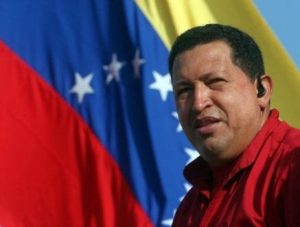
Hugo Chavez
EG: Absolutely. But I mean, again, it’s nothing new. It’s how the country has been functioning for decades. It’s just that before, most of that oil wealth was going into the pockets of an elite. And under these governments, Chavez, Maduro — Maduro has essentially tried to continue, ineffectively, the social policies that made Chavez so popular. But Chavez, also when he came to power, oil was at $7 a barrel. So I mean, it’s not as though they always had this $100-a-barrel to thrive off of in the country. The oil prices went up gradually over the years due to the the wars that the, you know, U.S. was engaged in the Middle East, as well as the role that Chavez, Venezuela and other countries played in sort of rejuvenating OPEC, of which Venezuela was a founding member. And they started to get the price of oil up and more focused on the oil producing countries rather than the oil consuming countries.
But certainly, when oil was reaching $60, $70 a barrel, Venezuela was spending lavishly not just on social programs, but on infrastructure, on all kinds of international agreements and buying things. And I mean, one of the — Chavez himself had, and I mean, I recall being in, like, a situational room in the presidential palace where he had a huge map about how his vision for the country was to invest those natural resources and strategic resources. It’s not just oil, it’s gas, it’s all kinds of minerals, heavy metals, to use those instead of just export them. To be able to have the technology inside the country, to use them to build up the infrastructure in other domestic industries to reduce dependency on oil. You know, something that never happened. I mean, they nationalized all these state industries and the people that were charged with it were incredibly corrupt and inept and incompetent. And so they ran them into the ground.
And none of it ever worked. But, I mean, the idea was there and now Maduro talks about it, too, even though there seems to be a complete disconnect between the discourse and the reality. And so, the dependency continues. And certainly, I mean, it’s a huge cause of the crisis the country is facing today is that over dependence and reliance on oil. Not just on the part of the government, but also by the people, who have become dependent on it in terms of expecting their piece of it — you know, the sort of overall entitlement that that people feel when they live in a system like that where the state is all-encompassing and provides so many of their basic services.
JS: It does seem that there is a trend under Maduro that I think echoes some of what we’ve seen in other governments in the region where all of the crises and all of the problems are essentially blamed on the United States or U.S. intervention. Now, of course, you wrote an entire book detailing U.S. dirty tricks and intervention in Venezuela, “The Chavez Code,” where you examined all of this in detail. Clearly the United States is constantly interfering in the affairs of countries around the world, but certainly throughout Central and South America. But it seems that that becomes a little bit too convenient to just constantly say, “Oh, well this is because the United States. This is because of U.S.-backed groups. This is all a U.S.-created opposition.” I mean, am I wrong? I mean, it seems like that that is sort of answer number one from the pro-Maduro camp.
EG: Well, I mean, it’s a little more complex. It’s not a simple yes or no answer. I mean certainly, I think there’s a culture, maybe a worldwide phenomenon of particularly leaders refusing to take responsibility for their actions. But I mean again, I keep going back to Chavez because, I mean, the Maduro government uses Chavez to justify everything they’re doing. So, I keep looking back and sort of studying and recalling his particular behavior in similar situations, or when he was facing a crisis. And one of the things that made Chavez so popular initially was when he engaged in a military rebellion or a coup against this corrupt President in 1992 and it failed. And he was the only one — Hugo Chavez, this young lieutenant colonel, came out in front of the cameras and took responsibility for the failure. And for Venezuelans, it was like a shock and awe moment. I mean, here we have someone in a position of leadership who’s actually saying: “I failed and I take responsibility.” And, you know, there will be more, to be continued. The story will be continued, which it most certainly was.
But, I mean, that was that was sort of a change, a shift that was very attractive to a lot of people in a country where so many had just blamed others for their mistakes or just turned their back on it. And now we’re seeing that again. I mean, that’s been one of my criticisms. Yes, there’s no question. Is the US funding the opposition in Venezuela? Absolutely. They’ve been doing it for years, you know? I mean, I’ve thoroughly documented it by using the Freedom of Information Act and uncovering the U.S.’ own documents where they show that they’re funding the opposition.
Are they backing and pushing for regime change? Totally. I mean, Mike Pompeo said it the other day in a public forum that they’re doing everything they can to seek regime change. I mean, we’ve heard it from Rex Tillerson the other day, the State Department, straight out, saying it. Maduro has to decide whether or not he wants a future, otherwise — I mean, now I’m paraphrasing — will decide it for him, something to that effect.
So, are they doing that? Yes. Is there some forms of economic warfare, of propaganda war? Yes there is. But are there mistakes and responsibilities on the part of the government? Absolutely. And I mean, there’s been widespread mismanagement. They’ve made horrific economic decisions in terms of the currency and these extreme currency controls that have skyrocketed the inflation in a parallel black market for the dollar. I mean — and then at the same time, the contracts that the government has engaged with companies to supply food products and all kinds of other consumer products to the countries, they’ve been rife with corruption. There’s been commissions skimmed off the top. I mean, there’s over $300 billion dollars that have been embezzled out of the country over probably the past, like, four or five years that have been unaccounted for.
So I mean, the government can’t just say, “Well we have no role in this.” Or the fact that so many of these nationalized industries, not the oil as much, but even so — I mean, that they’re not functioning to capacity. Some has to do with external sabotage, refusal to supply parts that are needed, to fix things, stuff like that, but other others have to do with the government’s own decision.
So I mean, it’s not always the boogeyman’s fault. But the U.S. certainly has a role — an open, notorious role in not only backing an anti-government, undemocratic in many ways, opposition in Venezuela and promoting regime change.
I mean — and that’s the other factor in this, is that the government of course is in power, the Maduro government, so they bear always a larger responsibility for what’s happening in the country than those outside of it. But there’s no question that the opposition represents sort of the old school wealthy elite that control the private enterprises that have run Venezuela for decades. And, they’ve played a role in hoarding products and just overall sort of sabotage to try to use that concept that that was applied in Chile against Salvador Allende in the early 1970s make the economy scream.
JS: But you’re of course talking about some of these groups that have received an enormous amount of support and money and consultants, et cetera, from the United States and other powers that have intervened. But certainly, you also have a significant swath of Venezuelan society that also is opposed to Maduro that is not on the U.S. payroll.
EG: Absolutely. I mean, it would be outrageous to say that they’re all on a payroll, or they’re paid protesters. That reminds me of Donald Trump saying that about anyone who protests against him. It’s ridiculous. No. I mean the thing is that now — Chavez was in office from essentially 1999 until he passed away in early 2013, and now Maduro’s been in office ever since.
So, we’re looking over nearly 18 years, basically. I mean, there’s a generation, a complete generation that has grown up only knowing this government. And so, of course, I mean it, that they blame this government for the problems that they are experiencing in the country — rightfully so. They have no reference of how it was before. I mean, a lot of times this government likes to say this government in Venezuela, “Oh they have no idea how it was before, when things were repressive, when there was real persecution, when there was torture and when there was no distribution of the oil wealth and when the poverty rates were so high.”
I mean, that for many people today is an unknown past. They only care about what’s happening now. So there’s a percentage of the population that sticks by this government because they don’t want what they see as the old guard to get back into power because they fear that things will return to how they were before. They fear that they’ll become invisible again and marginalized and excluded and persecuted. And they’re probably right, in a lot of that. Especially because when these same opposition sort of leaders that are today facing off with Maduro, were the ones who executed the coup in 2002 against Chavez. And when they took over for a brief 48-hour period, that’s exactly what they did. They dissolved the constitution, all the powers. They persecuted and killed people in the streets that were identified with Chavez, with Chavismo, you know? They started to roll back everything they possibly could and wanted to privatize everything.
So I mean, there’s a reference for the fact that people stick by this government. What they say essentially is: “Yeah, we know they’re corrupt. Yeah, we know things aren’t great, but the alternative is worse.” And then you have on the opposition side, those saying: “No way. This is a terrible government. Things are terrible for us, we just want a change.” And they don’t really care.
I mean, Venezuela’s a crisis of leadership because the opposition is not offering any kind of alternative leadership that really gives people something that they can look at in a positive way for the future. It’s either sort of the older guard or the current guard, you know? And both have shown that they haven’t governed in a way that’s been favorable to the people. At least in terms of the Maduro government now and those in the opposition leadership in the past.
JS: Right. And I most certainly agree with your history there about the outside forces that supported that coup and then what the coup masters wanted to do. What I find more interesting when someone like you and someone like me is discussing this is sort of how the left views this situation. And I’ve been reading various statements from groups of people — some of them people that served as foreign ministers, academics, political figures under Hugo Chavez, others that are from broader coalitions within Latin America — and, on the one hand, you have certain people within Venezuela and in the region who believe that defending the Venezuelan state, even with its flaws, is necessary because it’s an anti-imperialist and popular government. And then you have other groups that are recognizing everything you’re saying about the nature of some of the opposition groups, but are calling Maduro’s government increasingly delegitimize and authoritarian.
And I wanted to ask you, given that you knew Hugo Chavez well, that you wrote this book exposing U.S. interference in Venezuela, based on the United States government’s own documents: Do you believe that what Maduro and his allies are doing right now betrays the legacy of Hugo Chavez?
EG: I think in some ways it’s on that path, certainly. I think that there’s a lot of — there certainly isn’t a conscientious effort to betray Chavez’s legacy, but one of my main issues —
JS: I think it’s a pretty conscientious effort when you cook the books on a referendum.
EG: Well, right, that type of behavior to me is completely unacceptable and obviously betrays that legacy and not just the legacy of Chavez, but of the whole Venezuelan democratic structure that’s been reinforced, one was hoping, in this sort of more participatory democracy over the past — or at least up until about 2012, when before things started to completely fall apart.
But yeah, I mean, I think, it’s difficult because these are the people that were charged with sort of leading the movement forward, but at the same time there’s a circle of people in there — in power now in Venezuela — who were notoriously corrupt. Actually some of them, Chavez himself removed from government, wasn’t forceful enough in terms of imposing or having them go through a justice system, due process, but remove them for corruption. And now they’re back in.
So, in those ways to me that’s a betrayal of the fact that there’s a much more — an elitist structure in place. That even though the rhetoric, a lot of the rhetoric, remains the same, and even though there is still — and I mean that’s a main part of the narrative that’s missing. We can criticize the actions of the Maduro government, and we can say some of them are betraying Chavez’s legacy, but they’re not the only ones who matter here.
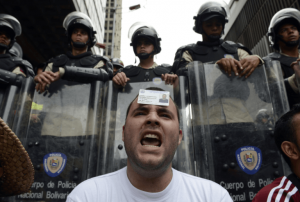
And we can also come out against any kind of U.S. intervention or efforts to impose regime change, as would be the same in any country around the world — violating the sovereignty of another nation is unacceptable. But, at the same time, there still are millions of people in grassroots movements who are fighting for their democracy, and they have their issues as well with the people who are in power. But they’re not willing to let go and give up and cede their space to those on the far right wing who would take power were this present government to lose power.
I mean, Venezuela doesn’t have any middle ground at this time, you know? So that’s why I think there’s a lot on the people on the outside, on the left, who are saying let’s just criticize and speak up against foreign intervention in Venezuela, and say nothing about Maduro. There are those who are saying, “No, no, we need to talk about the increasing authoritarian characteristics of this government. The betrayal, maybe, of aspects of Chavez’s legacy and all that was achieved under a Bolivarian Revolution that we’re now seeing come unraveled.” And there are those saying, “No, we need to stick by Maduro and just back him and keep our mouths shut.”
And I think it all is so nuanced. I mean, all of that debate needs to be had. At the same time, you have to look at, well, what is the role of people who are not directly involved in that movement, and which are the voices and the people who really matter who are in that movement. Is it Maduro himself, and the people right around him in the structure of power at the top, or is it the grassroots, the social movements, the workers, the community organizers, the people who are actually the ones trying, struggling to hold on to anything that’s left of this movement that they have been building and empowering themselves with now over the past fifteen years or so?
I mean, I think that’s the conversation that needs to be had. Those people are missing from the narrative. We hear from the opposition and the U.S. media all the time, we hear from all the critics, but we never hear from people. I’m not saying people who come out and say, “Oh, I love Maduro. I support Maduro.” But people in communities, the poorer people and the working class. I mean, that’s the majority of people really who comprise the Chavez movement in Venezuela. It’s this elite power structure that’s corrupted at the top.
JS: Who are the most powerful opposition figures in Venezuela right now?
EG: You have these sort of family, wealthy family legacies like Leopoldo Lopez, who’s in the headlines as a political prisoner. He comes from one of the wealthiest families in the nation, big business owners and old wealth. Henrique Capriles Radonski, who was the candidate who lost against Maduro and had previously lost against Chavez in presidential runs. They come from different parts — the opposition is comprised of over a dozen different parties.
Then you have, like — and Henry Ramos Allup, who was a leader of the older AD party, Democratic Action, or he’s in an adeco, as they say. And other parties have sort of fallen apart and regrouped a lot of that with funding from the National Endowment for Democracy and USAID. But still there are, there’s a group of different parties. You have far right reactionaries like Maria Corina Machado, another one who comes from the old guard, wealthy elite, family wealth in Venezuela who ran the country before.
So I mean, what you don’t have on the opposition side are leaders who have come from the grassroots like you have on the government side, you see? Because Maduro himself — we can say all kinds of things about him today, but he’s from the working class — he was a bus driver, he was a union organizer just as Chavez was, from a poor working-class family from the plains of Venezuela.
And a lot of the people around Maduro are not people who came from wealth or people who are from the working class. So, I mean, that’s part of it, is that the opposition has a complete disconnect with the majority of Venezuelans. Yes, they connect with the upper-middle classes, which are the voices you see and you hear in most international media, particularly in the U.S., because they’re well educated. They speak English. A lot of them live here, you know? They are involved in the groups of power and circles of power in Washington and here in New York financial circles. And so, they’re the ones that you hear the most. But that’s not — their voices are valid. I would never say that they’re not valid and that they don’t have a significant representation in the country today. But certainly there’s a huge piece that’s missing, which is the vast majority of Venezuelans that are only there not necessarily looking for an ideological component in their government, they’re looking for a government that’s going to meet their needs. That’s going to help the country move forward.
And that’s why Chavez initially connected with that large percentage of people in the country — because that was his promise and he identified with them. And they identified with him. And so that sort of propelled his leadership forward. And initially he was successful with those policies that catered to that majority and provided for them.
And so now that the economy has hit rock bottom and the country doesn’t have the same type of economic situation that it had just a few years ago, those people’s needs aren’t being met in the same way. And so they’re looking for change. But the change isn’t necessarily ideological for a lot of people in Venezuela. They just want leaders that are going to be sincere and honest, and who are going to govern in favor of the majority of people in the country. And not looking to get wealthy off of the oil, which is what the opposition did before and which seems to be what some of the people in power are doing today.
JS: Eva, describe what your book, “The Chavez Code,” investigated, and just give a kind of brief thumbnail sketch of your research that went into that book and what the conclusions were.
EG: So, “The Chavez Code,” which was my first book — I’ve written several since then — but “The Chavez Code” was the result of an investigation I did using the Freedom of Information Act to declassify U.S. government documents. And initially the idea was to do it in real time, because the coup against Chavez had just happened in 2002 and it was an unknown whether or not the U.S. government would release any documents just a year after, which is when the investigation began and I began doing the FOIA requests.
And that must have been, either Venezuela wasn’t a priority or they weren’t thinking about any kind of impact on releasing those documents. But I literally got thousands of documents from different U.S. agencies, including some top-secret CIA briefs around the days of the coup that clearly indicated the U.S. not only was funding the opposition before and after, but also had the who, what, where, when and why of everything about the coup. And there was military involvement. There were all kinds of different aspects that came out in those documents.
So, that that book in particular, “The Chavez Code,” really focused on what the documents the U.S. government documents themselves revealed about a U.S. role in the coup against Chavez and sort of what was behind that, what were they looking to do.
I also had a lot of documents since then that date back into the 90s, which is interesting just to mention. I did a book on some of these documents that showed— and I know that WikiLeaks has recently published also, as well some older documents from the U.S. government about Venezuela, which just shows what the priority was. And even State Department cables from back in the early ‘90s talked about how important Venezuela was to U.S. interests, not just because of the oil, but because of its geopolitical positioning in the region as the port of South America and the fact that they needed Venezuela to be the example of democracy for the region — as you know, a democracy that was clearly subordinate to U.S. agenda so that other countries would replicate that model.
Again, we saw that completely turned around when Chavez won office and then began a model that became replicated throughout the region, in terms, some have called it the pink tide, but we saw leftist governments winning in Bolivia and Ecuador and Argentina and Brazil and things sort of — the tables turned. And now we’re seeing them turn back again as the right wing and U.S.-favorable governments have risen again in Latin America.
JS: Now with the exception of designating Maduro, the Trump Administration seems to be essentially continuing, albeit with its own sort of spin, the basic U.S. policy toward Venezuela, at least publicly. What does this mean that Maduro has been designated and that assets have been frozen?
EG: Well it doesn’t mean much inside Venezuela. In fact, it’s seen as a badge of honor. Every time someone has been singled out by the U.S. government in recent years and given one of these sanctions, they have been awarded by Maduro himself recently, this sword of Bolivar, which is a replica of Simon Bolivar’s sword, the founding father of Venezuela and other countries in South America. And it’s seen as one of the highest honors.
And actually they were running a hash tag sort of campaign a few days ago saying #iwantmysanction. So it seems to kind of backfire because it really rallies the people and the troops around the government in the face of an external threat.
I know that the U.S. thinks that this is a strategy that they will turn Maduro himself into a pariah president or dictator, but, in the end, I mean, the Western world can come out against Venezuela. First of all, they’re not cutting off the oil supply. Were they to do that, they would harm more U.S. interests probably than in Venezuela practically, since it’s 30 percent of the oil supply to the United States and they have six refineries here in the United States. And Venezuela owns the Citgo gas chain, which has thousands of gas stations throughout the country.
But, as long as Venezuela maintains their commercial ties and their strategic alliance with countries like Russia and China, they’re not going to back down in the face of an external threat. They’re just going to get stronger in terms of doubling down. And, I mean, I think that’s something that it seems that to me that the U.S. government, or those who have the ear of whoever’s conducting that particular foreign policy fail to understand. And they underestimate the impact of it.
JS: Right, but I also want to point out, I mean, it’s also fascinating that in the New York Times editorial — not an op-ed, but an actual unsigned editorial from the New York Times editorial board — they caution against sanctions by the United States. And I just want to read you this sentence: “Any sanctions by the United States, aside from the dubious moral authority of the Trump Administration, feed Mr. Maduro’s claims of an imperial America seeking to crush Venezuela.” It’s interesting that that’s what they identify as the downside of sanctions, without mentioning the fact that they have the refineries in America, that they own the Citgo gas chain, that they’re a major supplier to the United States. It’s just, well, this would feed Maduro’s ego and his claim to be standing up to the imperialist Yankee.
EG: Right. And I mean, it goes beyond that. Well, first of all, there was an extreme lobbying effort that’s been going on over the past few weeks in Washington by U.S. oil companies and other supply companies against any kind of broader sanctions against Venezuela’s oil industry. So obviously that’s been successful so far.
But, it goes beyond just the fact that the U.S. needs the oil. They also don’t want to just hand all of it over to Russia and China and open the whole door to their return into this hemisphere. So there’s that geopolitical importance as well, as somehow maintaining that sort of bizarre tie with Venezuela, despite the rhetoric on both sides coming out of Venezuela as well. I mean, one day you have Maduro saying, “I aspire to shake Trump’s hand.” And the next day you have him saying, “Trump, Yankee go home.” You know? I mean, so it’s the same. It’s like this schizophrenic discourse on both sides because they can’t get away from that dependency that both countries have.
And at the same time, I mean, I — having known personally Nicolas Maduro — I know that he strives for that type of legitimacy. He was elected with less than two points. He’s undergone severe crises since he’s been in office. He never aspired to be president. It’s not something he dreamed of or worked for his whole life. And now he’s in this position where he’s become this international pariah in the Western world and he’s striving for legitimacy, not just amongst his own people, but also internationally. And that, unfortunately, starts with the United States.
So they’ve been making all kinds of overtures to the Trump Administration since late last year — lobbying efforts — and they even gave over a half a billion dollars to Trump’s inauguration fund. I mean, it’s amazing the efforts people undergo to try to get on the good side of a government that’s clearly hostile as the U.S. has been to Venezuela.
But certainly I think that the sanctions — I don’t think the U.S. really has many options at this stage there. They’ve been trying to work regionally to promote regime change. Those efforts have failed. Even though right wing governments have come back in a lot of Latin America, it’s not uniform and there are many of those governments still would refuse to endorse any kind of intervention into Venezuela. That would just set a precedent that would be very bad for the whole region. It could work against them as well.
JS: Well, and if Venezuela was producing vegetable oil instead of black gold, I think we’d see a very different situation. Eva, as we as we wrap up, I want to ask you: Given that you know personally so many of the players in this government in Venezuela, but also in broader Venezuela society — that you talk to people from a lot of different factions and perspectives — what do you think would be the most effective path forward given now that the United States has publicly taken this very hostile position toward Maduro, and that you have an increasing chorus of voices including people that are certainly not on the U.S. payroll, basically saying, “Look, Maduro, you’re tilting toward authoritarianism here.” What should happen going forward in order to resolve this?
EG: I wish that they hadn’t moved forward with this rewriting of the constitution and creating this sort of supra government, because it does make it more difficult to find a solution to the crisis. But I do believe, and I would continue to push for a dialogue between all the different factions in the country and to look for more reasonable elements as well within them as — and then of course holding elections. The problem with the elections — they’re supposed to be regional elections. They were supposed to have been last year for governors and mayors and then presidential elections next year. The problem now is that because of the fact that the electoral system may have been compromised — most likely was in this past election — because of the fact that, now there’s a supra government body in place that could decide whether or not elections take place. Or even if those elections take place, they’ll still have power above whoever wins office. So, it seems as though there needs to be some negotiating going on in terms of setting clear lines and a structure for how things are going to evolve. There has to be an electoral way out. There cannot be a regime change, not a coup, not any kind of anarchical, violent protests in the streets to push the country further to a civil war.
Venezuela is a country with a lot of guns and it’s grown increasingly violent over the years. People have become more and more sort of radicalized in their positions, and it is bordering that type of a situation. And I think all efforts, internationally, as well as those internally — the different power factions — should be looking for a negotiated way out that would have to include some kind of truth and justice commission, amnesty for those who have been involved in all the events and developments over the past couple years. Because you can’t find a way out of the situation if people feel as though they’re going to be persecuted once they’re out of power.
On both sides there have been crimes and it’s just an unfortunate reality. So, if we want to move Venezuela forward to a more peaceful resolution and away from a civil war, which is what it could become, then there needs to be some kind of a truth and justice commission, similar to what we’ve seen in neighboring Colombia, which is obviously a much different situation, where you have a broader amnesty for those who have been involved in the political developments over the past couple years. So that way at least, you know, there will be a feeling that people can move on and pass this without persecution.
JS: Should the U.S. players who interfered in Venezuela be part of that?
EG: I don’t think the U.S. should be a part of it at all.
JS: But I meant more about having accountability from some sort of a truth commission.
EG: Since when has the U.S. ever been held accountable for their actions in another country? I mean, we could denounce U.S. intervention and strategies and tactics of aggression against Venezuela until we’re blue in the face and still wouldn’t get anywhere. I think at this stage, what’s most important is that regionally, Latin America support a process in Venezuela. And I know there have been offerings. The French president, Emmanuel Macron has made an offer to participate in that process. The Pope, as well as others that play a more neutral role — which is what Venezuela needs. They don’t need any antagonistic players involved in a solution to the country’s current crisis.
JS: Alright. Eva Golinger, we’re going to leave it there. Thank you very much for joining us on intercepted.
EG: Thanks, Jeremy.
JS: Eva Golinger is an attorney and author of several books. Among them, “The Chavez Code.”
